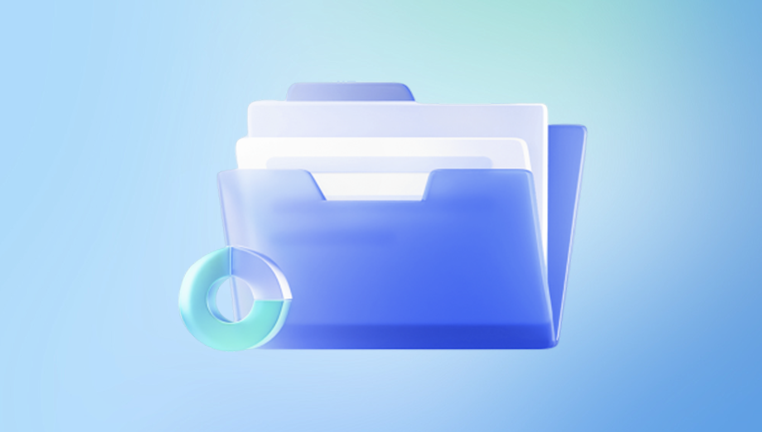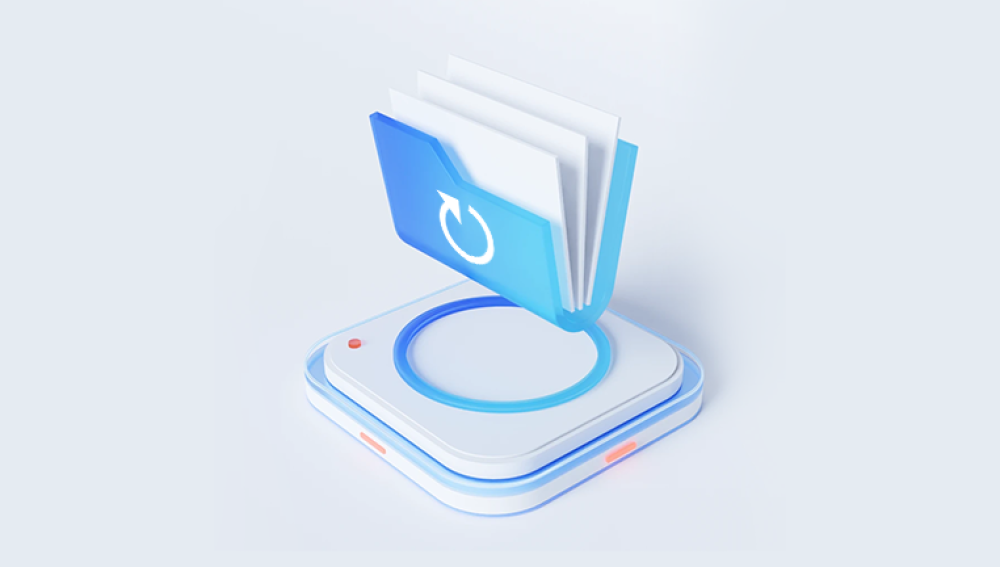When you delete a file, your operating system doesn’t actually erase it immediately. Instead, it marks the space as available, allowing the file to be overwritten by new data.
Until that overwrite happens, the file is still physically present and potentially recoverable with specialized tools. That’s why it’s critical to stop using the drive where deletion occurred and act quickly.
Criteria for Choosing the Best File Recovery Software
When evaluating recovery tools, consider these important factors:
Ease of use: A clean, simple interface saves time and reduces mistakes.
Supported file systems: NTFS, FAT32. exFAT, APFS, HFS+, etc.
File type compatibility: Documents, images, videos, compressed files, etc.

Scan types: Quick scan, deep scan, or raw recovery.
Preview before recovery: Helps ensure you're retrieving the right files.
Speed and efficiency: Recovery shouldn't take forever.
Customer support: Documentation, tutorials, and live support availability.
Price and licensing: Free, freemium, or paid—value should match cost.
Now, let’s explore the top options available in 2025.
1. Drecov Data Recovery
Best For: All-around recovery performance on Windows and external storage.
Overview:
Drecov Data Recovery is a powerful and intuitive tool designed for retrieving deleted files from PCs, USB drives, SD cards, external hard drives, and more. Its deep scanning engine makes it highly effective at locating lost files—even from formatted drives or corrupted partitions.
Key Features:
Supports NTFS, FAT32. exFAT
Recovers over 1.000 file formats
Quick and deep scanning modes
Preview files before recovery
Compatible with Windows 11/10/8/7
Pros:
Clean and easy-to-use interface
High recovery rate
Effective on formatted and damaged drives
Lightweight and fast
Cons:
Windows-only
Limited features in free version
Pricing:
Free version with file size limit
Premium license offers unlimited recovery and lifetime updates
Best Use Case:
Panda is ideal for casual and professional users who want an effective, no-nonsense recovery tool for Windows.
2. Recuva by CCleaner
Best For: Free file recovery on Windows.
Overview:
Recuva is one of the most popular free recovery tools. Developed by Piriform (the makers of CCleaner), it's a reliable option for basic file recovery tasks on Windows systems.
Key Features:
Recovers images, music, documents, videos
Deep scan for stubborn files
Secure overwrite option (military-grade deletion)
Portable version available
Pros:
Free to use for basic recovery
Lightweight
Good for recovering recently deleted files
Cons:
Struggles with formatted drives or severely corrupted data
No Mac version
Outdated interface
Pricing:
Free basic version
Pro version ($19.95) includes automatic updates and premium support
Best Use Case:
Great for users who want to recover recently deleted files without spending money.
3. EaseUS Data Recovery Wizard
Best For: Full-featured, professional-grade recovery.
Overview:
EaseUS is a well-established name in data recovery. It offers a slick interface with powerful features, including partition recovery and lost file scanning on nearly all types of storage devices.
Key Features:
Supports Windows and macOS
Recovers files from HDD, SSD, USB, SD, and cameras
Partition recovery
Preview before recovery
Pros:
High recovery success rate
Supports over 1.000 file types
User-friendly for beginners
Cons:
Free version limited to 2GB recovery
Paid plans can be expensive
Pricing:
Free: Up to 2GB
Pro: $69.95/month or $99.95/lifetime
Best Use Case:
Ideal for professionals, IT admins, or businesses that require robust recovery tools.
4. Disk Drill
Best For: Mac and Windows users seeking visual-based recovery.
Overview:
Disk Drill is known for its modern interface and powerful recovery engine. It supports hundreds of file formats and features like recovery vault and byte-level backups.
Key Features:
Windows and macOS versions
Supports all major file systems
Recovers documents, images, videos, archives
Smart previews and filters
Pros:
Visually appealing and beginner-friendly
Advanced filtering and categorization
Includes extra disk management tools
Cons:
Free version only previews files
Full features require upgrade
Pricing:
Free trial with preview only
Pro license: $89 for lifetime
Best Use Case:
Creative professionals who want clear previews and advanced file filters.
5. Stellar Data Recovery
Best For: Recovering multimedia files and advanced disk repair.
Overview:
Stellar is a comprehensive recovery suite with a long history in data recovery. It excels at recovering corrupted photos, videos, and documents.
Key Features:
Recovers deleted, encrypted, or corrupted files
Photo and video repair included
Deep scanning and RAID recovery (premium plans)
Supports formatted and RAW drives
Pros:
Powerful for image and video repair
Works on various storage types
Offers bootable recovery option
Cons:
Slower scan speeds
Steep price for full feature set
Pricing:
Free: Recover up to 1GB
Paid: Starts at $69.99 for Standard, up to $199 for Technician
Best Use Case:
Photographers, videographers, and IT pros who need media-specific recovery and repair tools.
6. PhotoRec (Open Source)
Best For: Advanced users needing free raw recovery.
Overview:
PhotoRec is part of the TestDisk suite and specializes in deep, raw data recovery. It doesn’t rely on file system metadata, so it works well on formatted or severely damaged disks.
Key Features:
Works on Windows, Linux, and macOS
Command-line interface
Can recover hundreds of file types
Works on formatted or unallocated space
Pros:
Completely free
No installation required
Can recover data from severely damaged disks
Cons:
No GUI (not user-friendly)
Requires technical knowledge
Doesn’t preserve original file names
Pricing:
100% free (open source)
Best Use Case:
Tech-savvy users who need powerful recovery for formatted drives or disks with lost partitions.
7. R-Studio
Best For: Enterprise and forensic-level data recovery.
Overview:
R-Studio is a professional-grade recovery tool used by data recovery labs and forensic experts. It supports complex RAID arrays, networked recovery, and deeply damaged disks.
Key Features:
Advanced recovery for RAID, encrypted, and remote systems
Hex editor and disk imaging
Recovers partitions and deleted volumes
Multi-platform (Windows, macOS, Linux)
Pros:
Extremely powerful
Great for corporate or forensic environments
Highly customizable
Cons:
Steep learning curve
Not beginner-friendly
Expensive
Pricing:
$49.99 to $899 depending on version
Best Use Case:
Enterprises, IT specialists, or forensic teams needing deep-level disk diagnostics and recovery.
8. Wondershare Recoverit
Best For: Quick, reliable recovery of lost data across platforms.
Overview:
Recoverit offers a modern, intuitive interface and supports a wide range of devices and file formats. Its deep scan and video repair features make it suitable for both casual and professional use.
Key Features:
Windows and macOS support
Recovers over 1.000 file types
NAS, external drive, and recycle bin recovery
Video repair and corruption fix
Pros:
Strong support for media files
Easy for beginners
Active customer support
Cons:
Scan speed could be faster
File filtering can be improved
Pricing:
Free: 100MB
Paid: From $69.95/year
Best Use Case:
Users looking for a simple interface with media-specific recovery.
9. MiniTool Power Data Recovery
Best For: Simple recovery from lost partitions or RAW drives.
Overview:
MiniTool provides effective data recovery solutions with a focus on partition recovery and user-friendly experiences.
Key Features:
Recovers from lost or deleted partitions
Quick and full scan options
Supports internal and external drives
Bootable media for crashed systems
Pros:
Great for partition and drive recovery
Bootable disk builder included
Compatible with many file types
Cons:
Limited file type filtering
Less effective for complex corruption
Pricing:
Free: Up to 1GB
Paid: From $69/year
Best Use Case:
Users recovering files after a partition loss or RAW drive format.
10. Advanced Disk Recovery (by Systweak)
Best For: Casual users needing quick recovery from local storage.
Overview:
Advanced Disk Recovery focuses on ease-of-use with an interface similar to Windows Explorer. It allows both quick and deep scans and is suitable for home users.
Key Features:
Fast scanning of internal and external drives
Restore from formatted or deleted partitions
Step-by-step wizard recovery
Pros:
Easy interface
Supports major file systems
Good for general users
Cons:
Fewer customization options
Not ideal for heavily corrupted files
Pricing:
Free trial
$69.95 for full version
Best Use Case:
Everyday users recovering accidentally deleted files from common devices.
Tips for Successful File Recovery
Stop Using the Affected Drive
Writing new data risks overwriting your lost files.
Act Quickly
The sooner you attempt recovery, the better your chances.
Install Recovery Software on a Different Drive
This prevents accidental overwriting during installation.
Preview Before Restoring
Use preview features to confirm you're restoring the right file.
Use Deep Scans When Needed
If a quick scan doesn’t help, switch to a deep scan.
How to Prevent File Deletion in the Future
Enable File History or Time Machine
Keep automatic backups of important files.
Use Cloud Storage
Sync with OneDrive, Dropbox, or Google Drive for real-time redundancy.
Create System Images
Use built-in tools or third-party software like Macrium Reflect for full backups.
Double-Check Before Deleting
Avoid shift-deleting files unless you’re certain.




